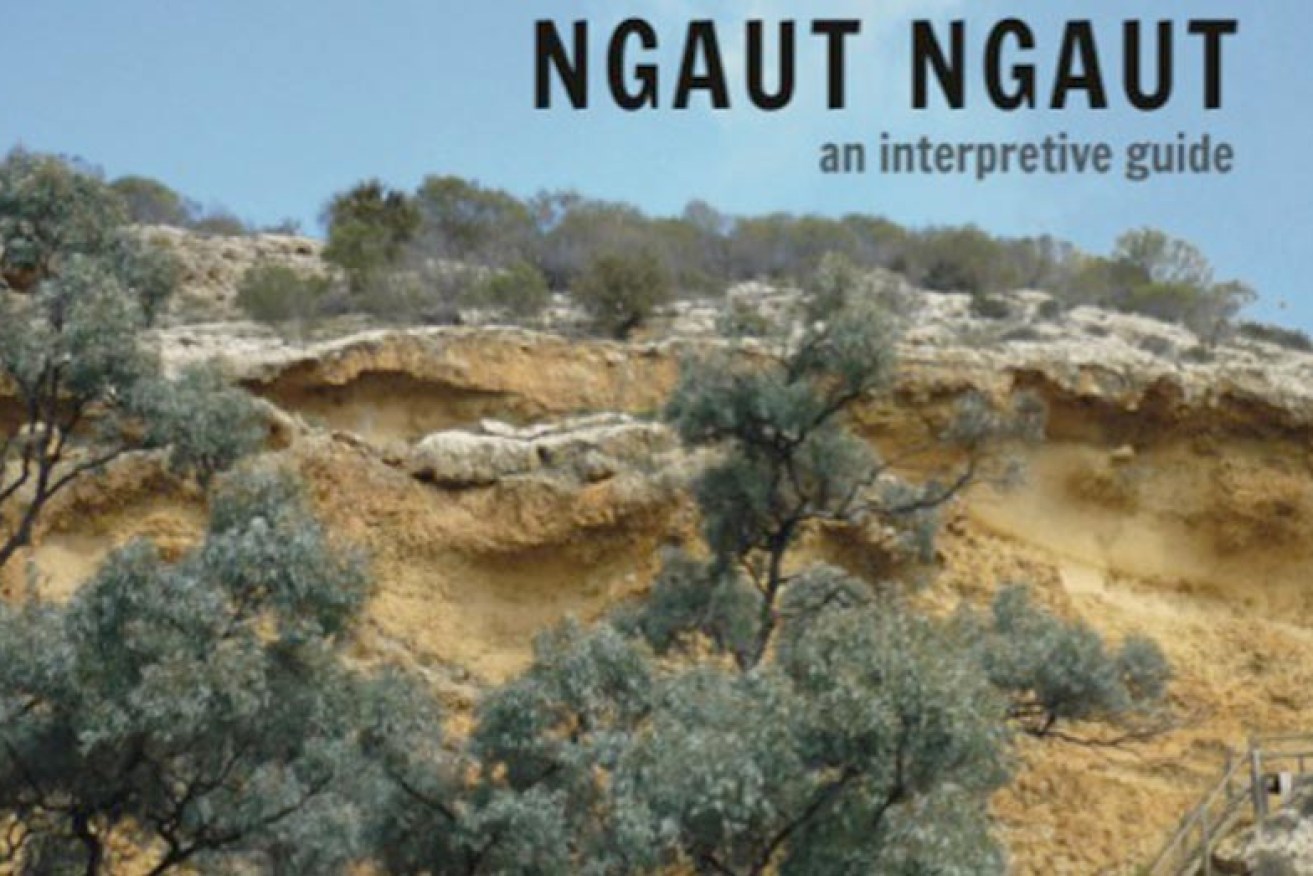
Indigenous project a new approach to cultural heritage

Detail of the cover of the Ngaut Ngaut interpretive guide.
A collaborative endeavour between a Flinders University archaeologist and the Mannum Aboriginal Community Association Inc (MACAI) is changing the way intellectual property issues in cultural heritage are addressed as part of a global initiative.
Over the past five years, Dr Amy Roberts and MACAI have developed a set of cultural tourism materials to explain the archaeological record as well as a range of other important cultural heritage values at Ngaut Ngaut, a rock shelter site on the Murray River in South Australia that is significant to the local Aboriginal community.
The project won the support of the Intellectual Property Issues in Cultural Heritage (IPinCH) project, based out of Canada’s Simon Fraser University.
Dr Roberts said one of the primary aims of the Ngaut Ngaut Interpretive Project was to give MACAI greater control over the way information about the site was presented online.
“The Internet poses significant challenges to the presentation and regulation of cultural information, site images and copyright issues,” Dr Roberts said.
“The key differences between the IPinCH-funded work and other Internet resources are that the materials have been developed in a collaborative, structured and culturally sustainable manner,” she said. Ms Isobelle Campbell, chairperson of MACAI, has been one of the key community leaders associated with the project.
Ngaut Ngaut was the first Indigenous rock shelter site in Australia to be ‘scientifically’ excavated, Dr Roberts said.
“The excavations, conducted by Norman Tindale and Herbert Hale, began in 1929. Their research provided the first clear evidence for the long-term presence of Indigenous Australians in one place.
“Prior to Hale and Tindale’s excavations little systematic research had been conducted in the field of Indigenous Australian archaeology. In fact, the thinking of the day was that Indigenous Australians were recent arrivals to Australia and consequently it was generally believed that the material culture of Indigenous Australians had not changed over time.
“Hence, the research at Ngaut Ngaut provided a turning point in the way the Indigenous Australian archaeological record was viewed.”
An online interpretive book is now hosted by the South Australian Department of Environment and Natural Resources. A hard copy version has also been published by IPinCH and MACAI.
Dr Roberts is only one of a number of Flinders staff and students, including Lyn Leader-Elliot, Professor Claire Smith, Christopher Wilson and PhD students Julie Mitchell and Maddy Fowler, who are part of the IPinCH team.
Led by Flinders adjunct Dr George Nicholas, IPinCH promotes a model of collaborative research “that puts indigenous community partners in the drivers’ seat of the research process”.
The initiative has supported indigenous communities from the Canadian Arctic to the Australian outback and the steppes of Kyrgyzstan by reuniting them with their cultural artefacts, staving off linguistic extinction and developing cultural tourism.
IPinCH has just received the first Social Sciences and Humanities Research Council of Canada Partnership Award, which comes with $50,000 in funding.




